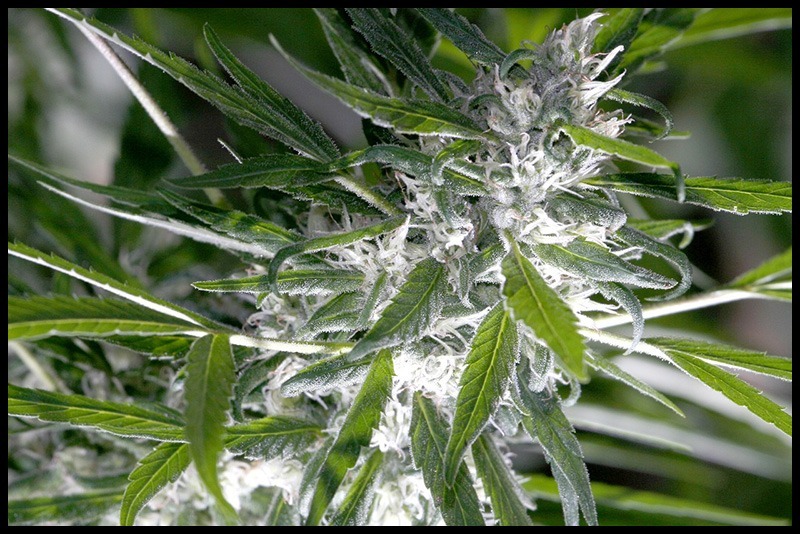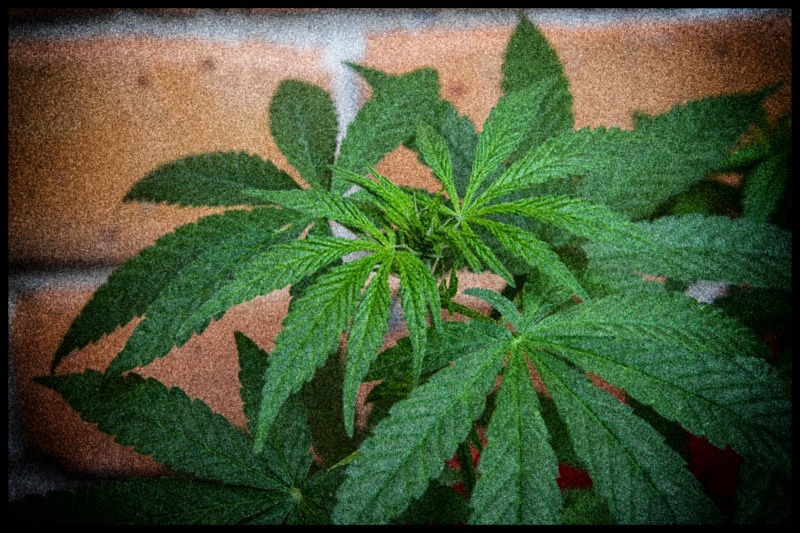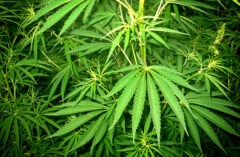Table of Contents
Last Updated on March 17, 2023 by Team Spinfuel
Hop latent viroid (HLVD or HpLVD) is a circular, single-stranded virus that causes “dudding” in cannabis. HpLVD can remain latent in a cannabis plant for long periods before exhibiting signs such as irregular branching, decreased trichome production, chlorosis of the leaves, and stunted development. HpLVD is easily transmissible by shears and diseased plants interacting with healthy plants, resulting in HpLVD spread. Learn more about hop latent viroid and how to protect your weed crop against this virus.
There are certain seed banks who have taken steps to ensure HLVD is not a problem, for example, if you’re growing something like this Cereal Milk strain then you need not worry about HLVD.
An overview of HpLVD
HpLVD is an infectious disease that can produce “dudding” or “dudding disease” in cannabis plants. This disease may or may not display symptoms and can remain latent for years before symptoms appear. The initial indicators of this disease were detected in 2018 but were only verified in 2019 after more investigation. There’s still much to learn about the hop latent viroid, its progression, and its transmission. Researchers now believe that this virus generally spreads from plant to plant through mechanical transmission. This means the contaminated plant must come into direct or indirect contact with a healthy one.
Researchers have also discovered that the HpLVd has already spread to hundreds or thousands of plants worldwide. Furthermore, because it was only recently identified, most growers are unaware that their plants are contaminated or are unaware that this virus causes the signs the plants are exhibiting.
How does HpLVD spread
Due to current cannabis regulations, research into this pathogen is still ongoing. Still, it is recognized that the virus can spread through contact (for example, pruning an infected plant and then pruning an uninfected plant) with tools such as scissors, scalpels, shears, or any other similar tool. As a result, you must sterilize them before touching a new plant.
This virus can also be spread through the seed of a diseased plant, although study into how this happens and the rate of transmission is continuing. It’s quite tough to detect an infected plant because asymptomatic plants appear healthy but are actively transmitting the virus to your whole crop, so take safety measures.
Common HpLVD indicators during the vegetative phase
During the vegetative phase, marijuana plants often show the following symptoms:
- Shorter internodal spacing.
- The leaves become smaller.
- Plants are growing shorter than usual.
Common HpLVD indicators during the vegetative phase
During the flowering phase, infected cannabis plants will usually:
- Develop smaller and looser buds;
- Have fewer trichomes.
- Sometimes reduce the cannabinoid content by up to 50%.
How to identify HpLVD in your marijuana plants
If you believe your plants are infected with the HpLVd, the first step is to find out for sure; thus, you’ll need to conduct a test, such as:
Screen test
While not all marijuana plants can display apparent symptoms or appear infected, the quickest approach to detect its existence is a screening test, such as a qPCR test, which can be difficult to obtain depending on where you live and how much you want to spend, and is generally suggested for commercial producers. Also, remember that you can use a qPCR test to ensure that mother plants and freshly obtained clones are virus-free, but this can be costly; therefore, always take appropriate steps. When your cannabis crops test positive, here are common steps to take:
Isolation
If the findings are positive, you should remove all contaminated plants from the grow room as soon as possible and dispose of, as should, all plants that came into direct contact with the sick plant.
Tissue culture
If you have tested your entire crop and all of your plants are infected, or if a specific mother plant is infected, the simplest way to get rid of the HpLVD is through tissue culture. This process uses a specific treatment that eliminates the virus, allowing the new plant to grow 100% healthy and disease-free.
Tips on how to deal with HpLVD on your cannabis plants
The ideal way to prevent the virus is to sterilize the equipment before working on a new plant. It is also a good idea to wash your hands and change into fresh gloves before working on a new plant. To reduce the risks of disease vectoring, always practice excellent cleanliness while entering your growing environment. Furthermore, bring in no unscreened plant material from the outside world, and don’t enter your grow tent wearing shoes you’ve just worn while wandering around the garden.
You don’t always have to clean the plant since, in certain circumstances, you might obtain a positive from the bottom and a negative from the top. Thus, here are some ideas to make your life easier:
- Always clone from the plant’s top since top growth is generally healthier.
- Each plant should have a pair of scissors and a razor blade.
- Change your cloning solution between plants, and remember that bactericides and similar compounds delay root formation, so be patient!
Despite not being super harmful at first glance, the Hop latent viroid is something you should look out for since it can infect your whole crop. Even though it’s not as destructive as other pathogens, it will be bad for your cannabis plants, particularly if you’re a commercial grower. As a result, always clean your tools before working on a new crop.
Look for unusual growth, especially if that particular strain has grown properly and has only suddenly begun to underperform. It might not be a big deal if you are not a breeder or commercial grower; however, you will notice a difference in bud quality, quantity, and overall plant development and health, so take all safety steps possible.
Seed banks like Premium Cultivars have taken the extra steps to ensure all of their autoflower and feminized seeds are guaranteed to be HpLVD free!
Further Reading:
How To Dry and Cure Cannabis in 2023
Cannabis How To Perfect the Sea Of Green (SOG) Technique
How to Build Your Indoor Cannabis Grow Space










